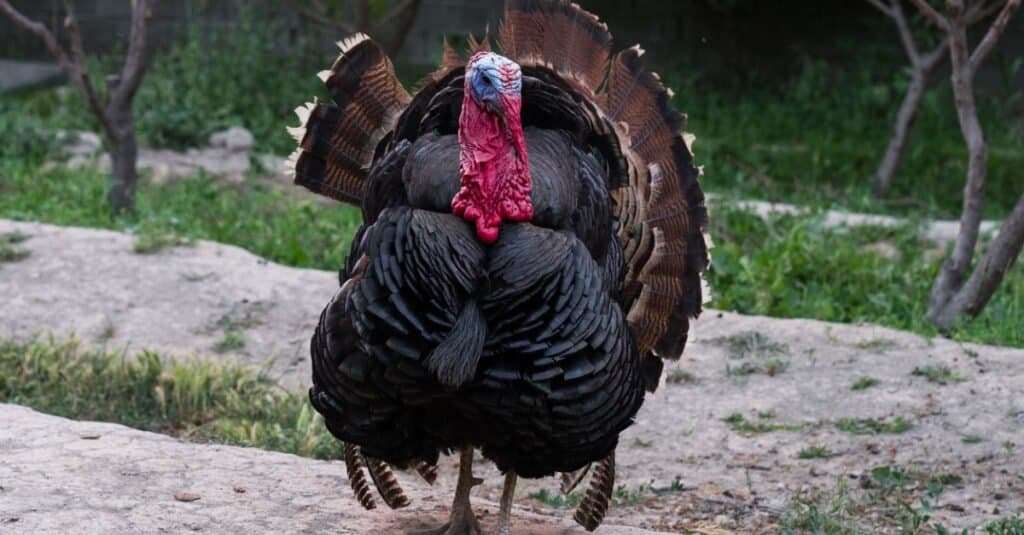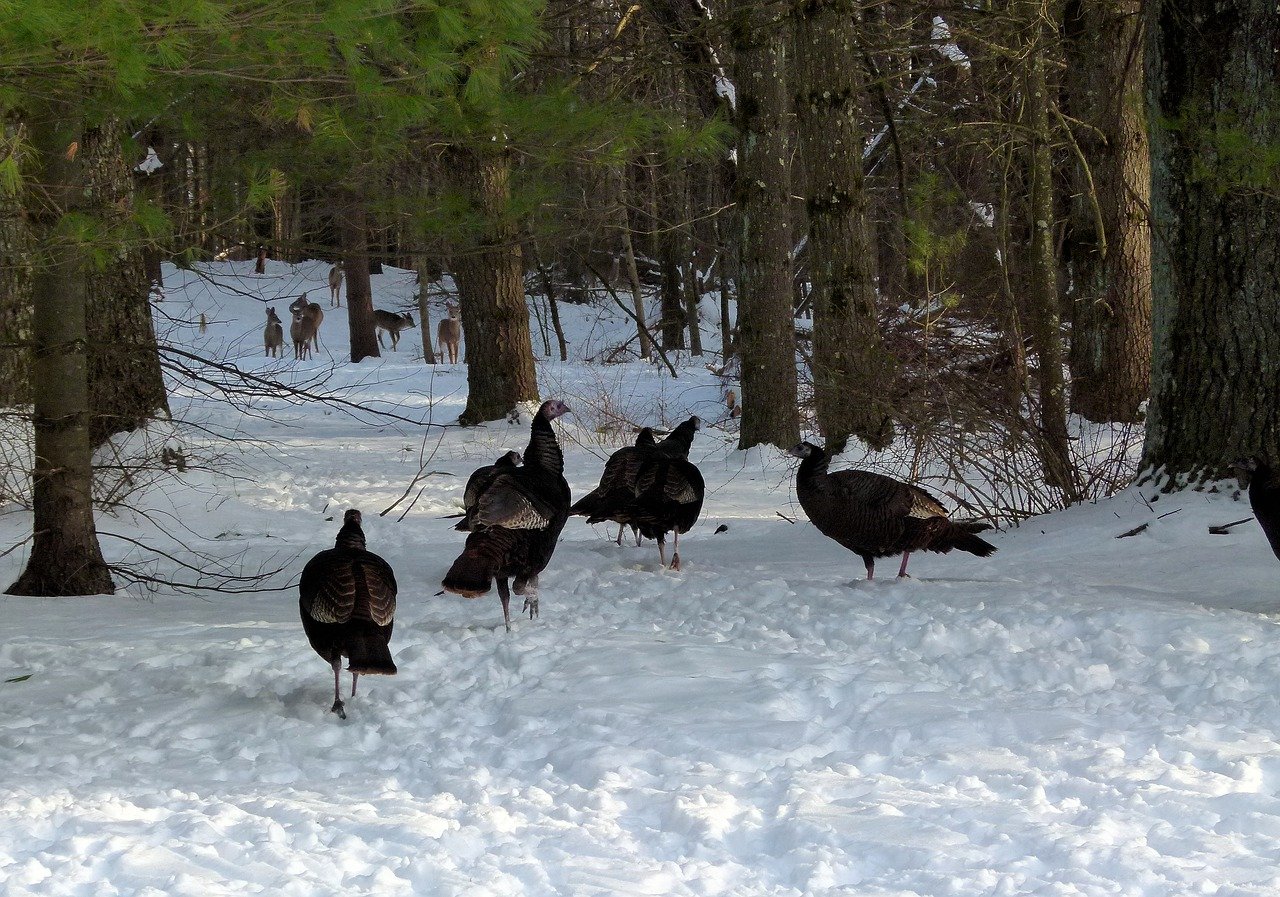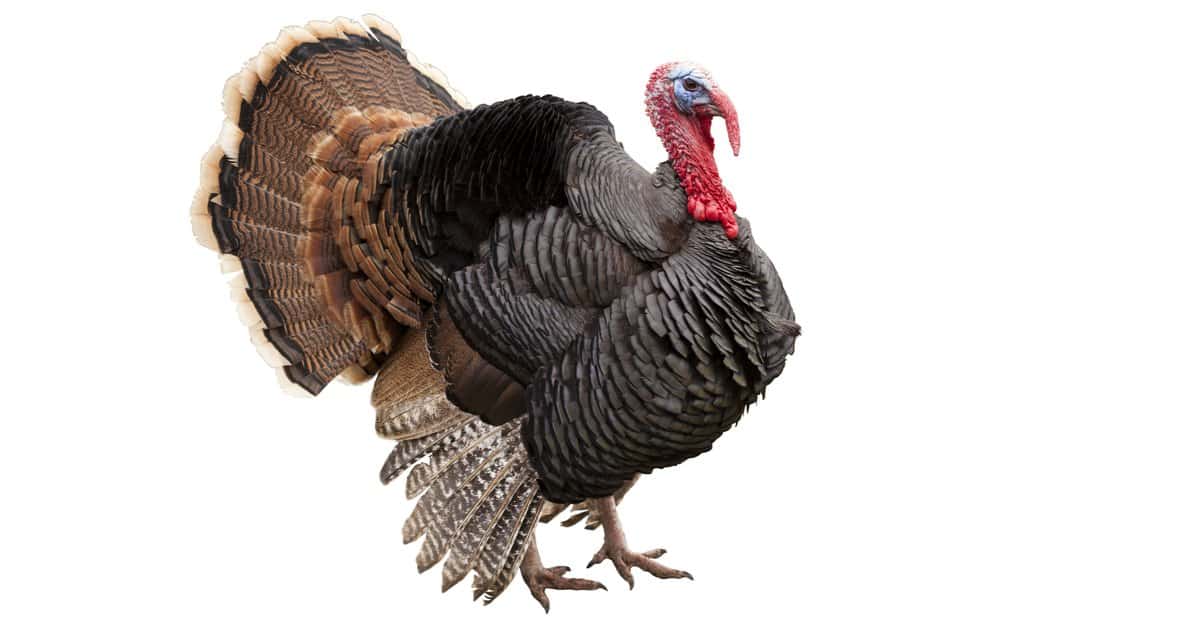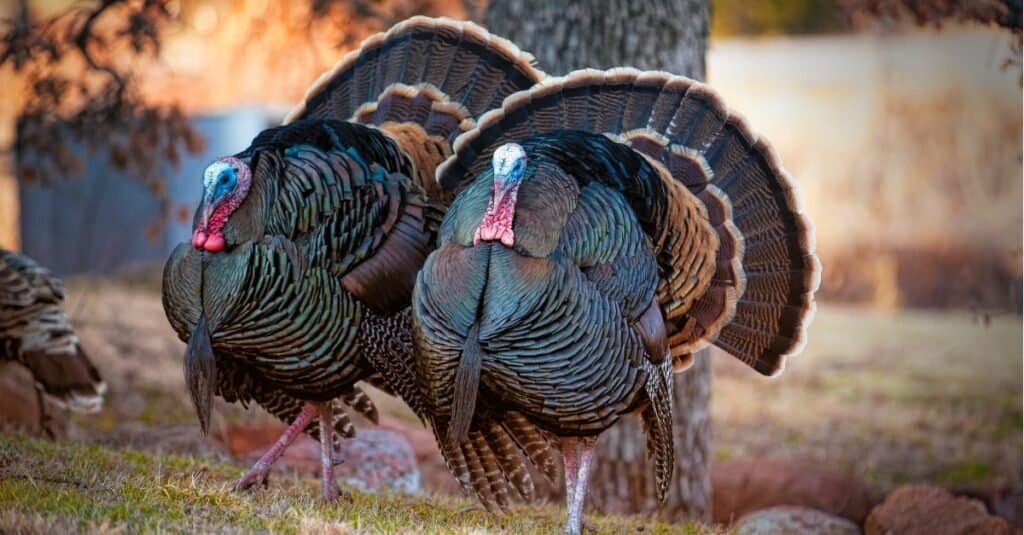do turkeys sleep in pine trees
A direct and indirect key feature to wild turkey survival and. During the first few weeks of life young turkeys sleep on the ground under their mothers wings.

How To Raise Heritage Turkeys Red Rock Farmstead
They do so because they have so many predators.

. However domestic turkeys sleep in brooders inside poultry. Turkeys are large birds. Watch out for turkeys on the road.
On the contrary wild turkeys are found in forests across the country 49 states to be exactFive subspecies are scattered throughout the continental US. Turkeys and other ground nesters hatch-out with fuzzy feathers open eyes and they soon can run. Instead they sleep in places called roosts which generally are trees.
Most of the wild turkeys you see this time of year travel in groups and there is a surprising amount of order within those groups. They have poor night vision so they cant go above 16-meter height. Turkeys can be found habitats such as.
During severe storms they will stay in the trees sheltering themselves from the weather as much as possible. This keeps them high above. These densities are comparable to turkeys in other areas and higher than densities in many areas.
They also are seen frequently on this island these days. Where Wild Turkeys Sleep. Once the weather has calmed they will continue to forage and browse for whatever foods they can find.
The nesting trees were widely dispersed and ranged in diameter from 36 inches to 65 inches around at breast height. Hens will only visit the nesting site long enough to deposit her egg for the day. Wild turkeys sleep in the branches of trees at night.
In Vermont there are an estimated 40000 to 60000 birds while in New Hampshire the figure is about 40000. Wild turkeys live in a variety of habitats throughout North America. I actually prefer pine plantations says Norton who has hunted turkeys for over forty years.
The tree species in the study included blue oak interior live oak Oregon white oak and valley oak. Most birds like songbirds and raptors nest in trees. For example even in the depths of winter when snow cover blocks access to the ground turkeys can make do.
At the end of the laying period incubation starts. Turkeys do roost in trees. They look a little awkward up there but they are actually very strong fliers and know the best places to avoid predators.
Unlike many animals wild turkeys do not feed at night. Provide food daytime resting and escape cover and most importantly nighttime roost sites. Wild turkeys spend a lot of time during the day walking about searching for food.
When you hunt in a hardwood bottom a gobbler may hang up at seventy yards and strut and gobble until he sees a hen. When our family moved here in 1972 no turkeys were seen. The key to good turkey habitat is good cover and good forage.
Turkeys cannot see well in the dark. The birds are usually seen walking so many people are surprised they even fly. Densities for hens and gobblers combined from other areas were.
The states re-introductory program worked well. The rest of her time will be spent elsewhere feeding and roosting. There are six subspecies of wild turkeys found in North America with the eastern subspecies Meleagris gallopavo silvestris being the most prolific.
Yes turkeys can fly. The best snow ration of all. This Thanksgiving you might find turkey on your plate but it generally isnt of the wild variety.
I was so happy to finally film so many turkeys close-up doing this. The birds fly to them around dusk and spend the evening in them before flying down to the ground in the morning to eat. Still you can keep wild turkeys from feasting on your garden or shrubs by using a motion-activated scare device such as a Scarecrow Motion-Activated Sprinkler or by protecting plants and vegetables with hardware cloth.
Where do turkeys spend the night. Wild turkeys nest in trees. When their eggs hatch the chicks are altricial They are featherless and blind squawking for food and warmth.
How does wild turkeys sleep. In danger they hop from lower branches to upper to reach higher on trees. During this time the hen puts herself in danger.
Eastern broadleaf forests clearings and meadows open forests wooded swamps gulf coast live. Wild Turkeys noisy flight into the trees to find the perfect branch to spend the night. After a month or so they leave the ground and fly at night to a large low branch where they place themselves under the deeply curved wings of their kind and careful parent dividing themselves for that purpose into two nearly equal parties.
Provide food for adults and are especially important to poults as environment in which they can forage for insects. Poults on the other hand are precocial ready to run cool fact 3. Until thaw comes they subsist on white pine and hemlock needles mosses lichen and the buds and stems of beech sugar maple and hop hornbeam trees.
Wild turkeys sleep in trees. All summer long hens keep their poults. When turkeys sleep in trees do they sleep upside down.
Turkeys roost in trees at night and so depend on woodlands for safety at night. Turkeys sleep in trees. And Hawaiʻi indicating the turkeys ability to live in a variety of forest ecosystems from swamps to oak forests to deep.
In Alabama on an area with 10 openings density was about 04 turkeysmi 2 and in heavily forested areas of Missouri. Despite their numbers and year-round presence they arent always easy to see. Wild turkeys sleep on trees at night.
Roosting Habits of Wild Turkeys. Actually they are excellent flyers and can fly straight up 50 feet to roost in a tree at night. General wild turkey habitat requirements.
The two-time World Champion Caller has grown quite fond of hunting turkeys in the pine plantations of the South. Try to avoid the use of netting which can entrap birds and other animals 5. Though they only fly for short distances they are speedy and can hit about 55 miles per hour when going full tilt.
01mi 2 NH 15mi 2 KY 02mi 2 NC and 05mi 2 TN. Turkeys will roost out of the snow whenever possible. Turkey vulture nestlings deep inside a hollow tree at the UC Hopland Research and Extension Center.
It takes hens about two weeks to lay a full complement of nine to 13 eggs. Sleeping in trees provides protection from predators that roam and can see at night. Turkey hunters who know the roosting habits of the bird can use.
Tom turkeys show courting behaviors much like the peacock with displays of their tails. Now in 2019 they are a familiar sight all over the island. They fly up to roost at dusk and fly down at dawn to begin their daily rituals.
Although turkeys are often thought of as being anchored to the ground wild turkeys actually spend their nights perched atop of tree branches.

6 Common Myths Of Wild Turkey Behavior

How And Where Do Turkeys Sleep Az Animals

How And Where Do Turkeys Sleep Az Animals

The Fascinating Fall Behavior Of Wild Turkeys Cool Green Science

The Fascinating Fall Behavior Of Wild Turkeys Cool Green Science

Understand Turkey Roost Habits For Early Success Don Mulligan Kpcnews Com

Where Do Wild Turkeys Sleep Turkeys Unique Sleeping Habits Explained

Wild Turkeys Like To Sleep In Trees

How And Where Do Turkeys Sleep Az Animals

Where Do Turkeys Sleep What To Know Pet Keen

Where Do Wild Turkeys Sleep Turkeys Unique Sleeping Habits Explained

The Fascinating Fall Behavior Of Wild Turkeys Cool Green Science

How And Where Do Turkeys Sleep Az Animals

Curious Kids Facts Where Do Turkeys Sleep

Where Do Turkeys Sleep New Secret Info Facts Revealed

Where Do Turkeys Sleep What To Know Pet Keen

Where Do Turkeys Sleep What To Know Pet Keen

Wild Turkey Birds Roosting In The Trees At Night A Look At Wild Turkey Behavior Youtube
